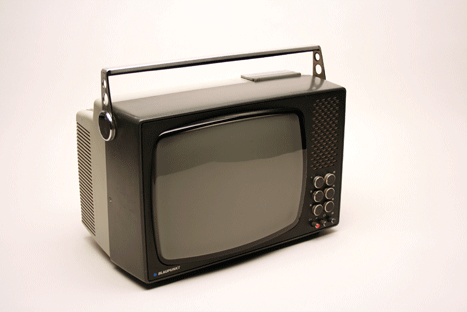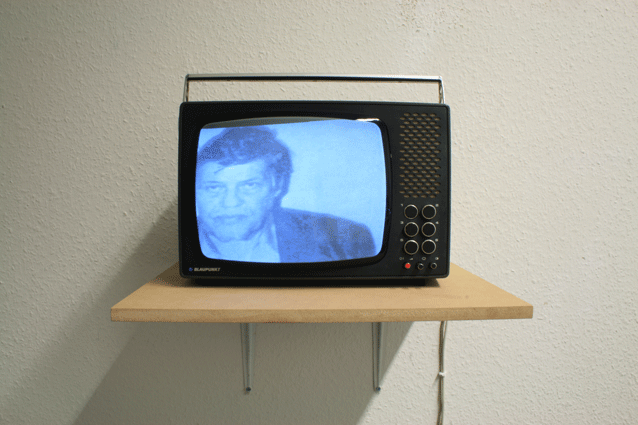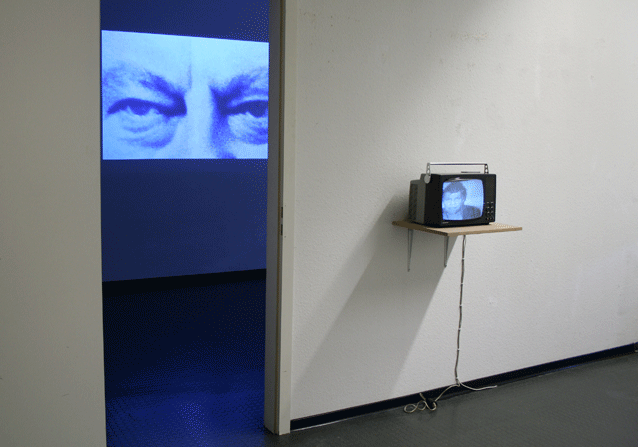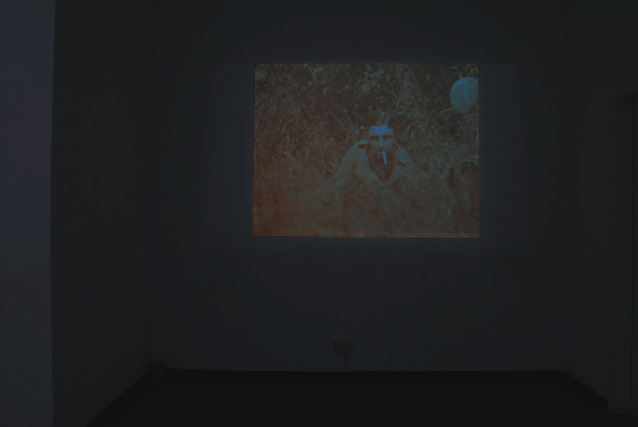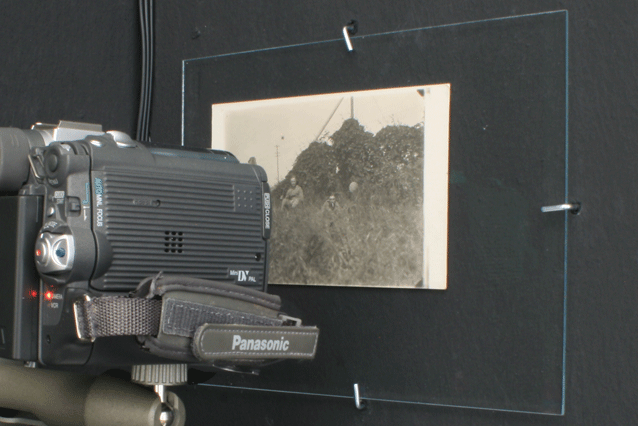Tidying Up Media
Alexander Steig’s exhibition APPELL
If you visit Alexander Steig’s website, you will be greeted by a photo depicting a very unusual arrangement. An old cathode-ray tube monitor, perhaps from the 1970s or 1980s, sits discarded on an equally dated chair; beside it, an old push broom leans against the wall. This still life is situated in a dilapidated room, plaster falling off the walls and exposed bricks crumbling. There is no electrical outlet in sight that might get the antiquated monitor working. So, instead of an informational or entertaining picture, the monitor transmits only its pure monochrome-grey reflective screen. The screen is the focus of this photo and serves as a placeholder for the rich variety of media that have stood for both neutral news distribution and manipulative opinion making since the era of this television’s model. And its grey screen is the entry point to Alexander Steig’s artistic work, which deals with the changing content of visual worlds, their media dimensions and our own individual, very personal approaches.
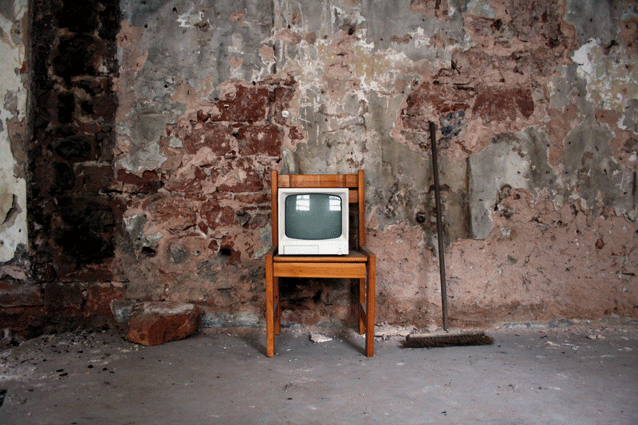
Immediately upon entering the first room of the exhibition APPELL in the Ermekeilkaserne (Ermekeil Barracks), we encounter these monitors of yesteryear. They stand opposite one another, as if posed for a duel, enticing us to speculate about the people depicted in portrait on their screens. Departing from convention, the monitors do not transmit moving images—no rapid flow of events that we must follow at a rapid pace—but give us the chance to concentrate calmly on a seemingly still image. Our gaze is allowed to explore the portraits of a young man and an older man, to make comparisons and psychological interpretations and to perhaps even discover similarities. And most likely anyone who personally experienced the Deutschen Herbst (German Autumn) will recognize Hanns Martin Schleyer: on the left side as the president of the Employers Association and humiliated hostage of the Red Army Faction and on the right—perhaps a less well-known image—as a self-confident young man dressed in the uniform of a Heidelberg student fraternity.
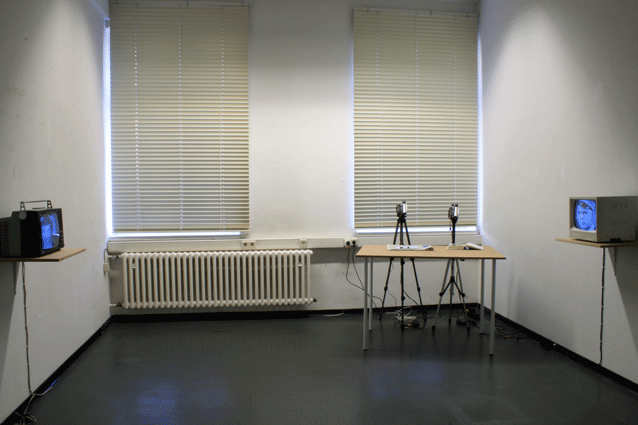
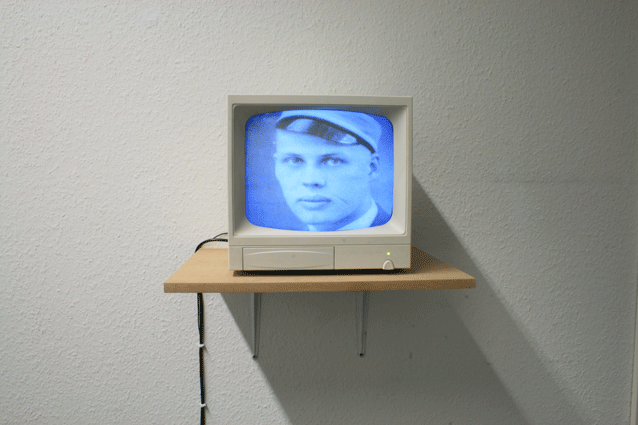
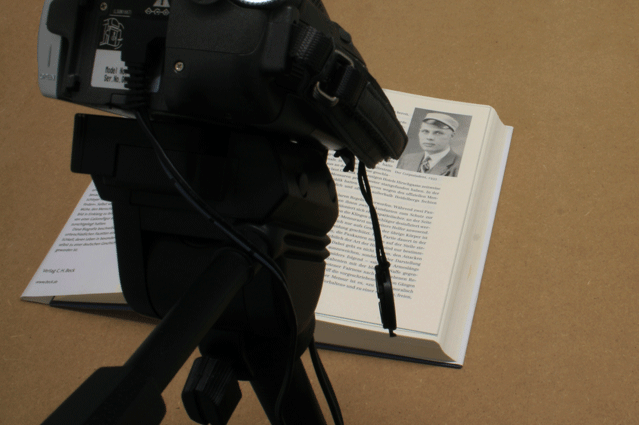
In particular, the image of Hanns Martin Schleyer as a prisoner has become etched in our collective memory in connection with the events of the terror years around 1977. It belongs to an era in which we did not (yet) mistrust pictures, did not doubt their authenticity or assume that their sources might have manipulative intentions. These were the decades before the digital revolution invalidated the legitimacy of images. Nevertheless, Alexander Steig wants us to deal with the origin of these pictures. The disclosure of their sources is part of the program of his staged installation. Both portraits originate from images that are laid out near the monitors, filmed by video cameras and transmitted directly to the monitors. This so-called closed-circuit procedure is often used as a mechanism to transport video recordings from one location to another environment without delay, so that they may be used for monitoring and control.
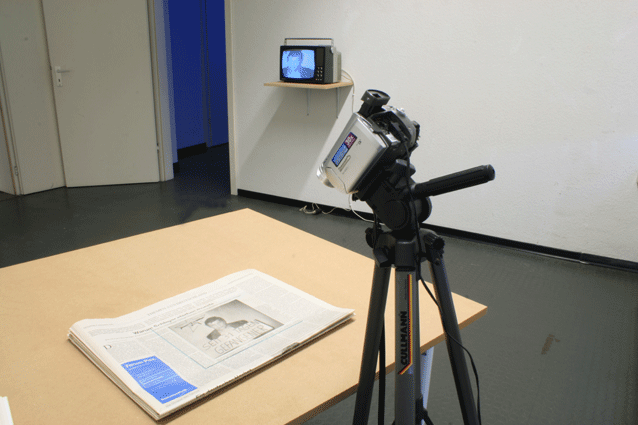
The feeling of control is intensified in the adjacent room where there is no escape from a pair of eyes projected onto the wall. Once again, a closed-circuit installation provides the image detail that is quickly revealed to be a close-up of the characteristic eye area of the politician Franz Josef Strauß—who was also involved in the political debates of the Federal Republic of Germany during Hanns Martin Schleyer’s tenure and whose arch-conservative views were highly polemical. In addition to a chronological parallel, Alexander Steig has used the pictorial presence of Franz Josef Strauß to establish a deliberate thematic link to the exhibition’s location in the Ermekeilkaserne. For in his position as the second Minister of Defence of the Federal Republic of Germany, Franz Josef Strauß lorded over these barracks from 1956 to 1963 and initially carried out his official duties from here. However, Strauß’ dapper autographed photo card, which Alexander Steig used as the source for this projection and is also on view in the room, reveals nothing of the military context or the political hardliner himself.
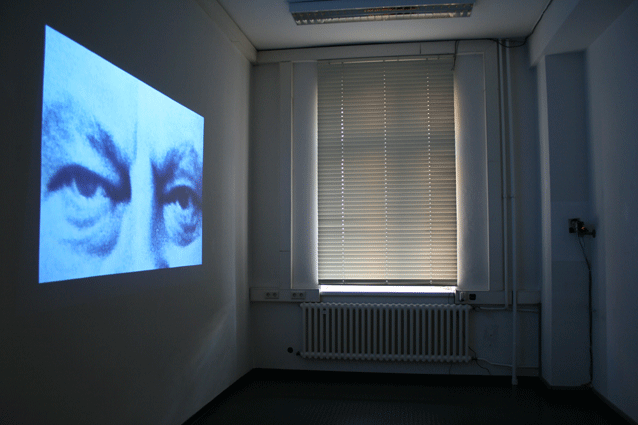
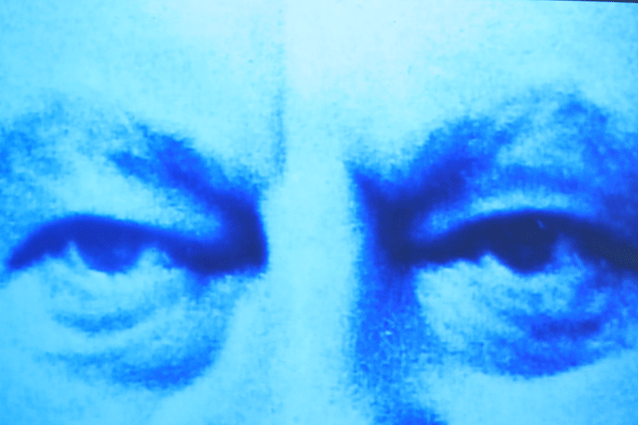
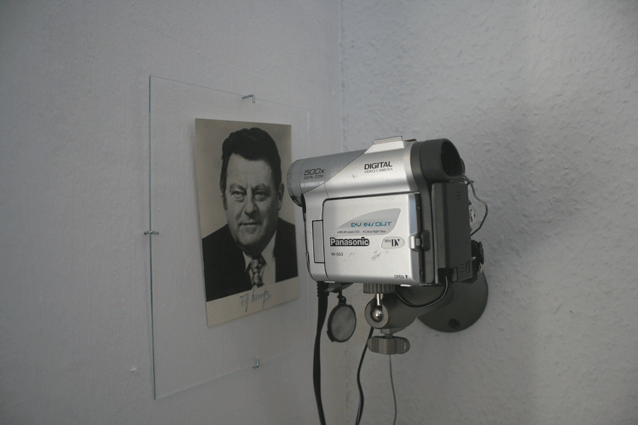
In the third room, too, it is only the transmission of the video camera that makes it clear from which context the photo projected on the wall has been separated. In this case, the strongest shift in meaning probably occurs. The projection offers us an historical image of a young man, casually posed and in good humor, possibly during a trip to the countryside. Only upon closer inspection and a literal glance behind the scene—that is, to where the video camera and source image are located—does the actual (and in conjunction with the other two installations) military dimension of this shot open up to us. This is a soldier from the First World War who had a carefree souvenir photograph made of himself during his deployment to the front, something to send home by field post as a sign of life. A photograph that came into being during a state of emergency still attempting to feign the normality of life.
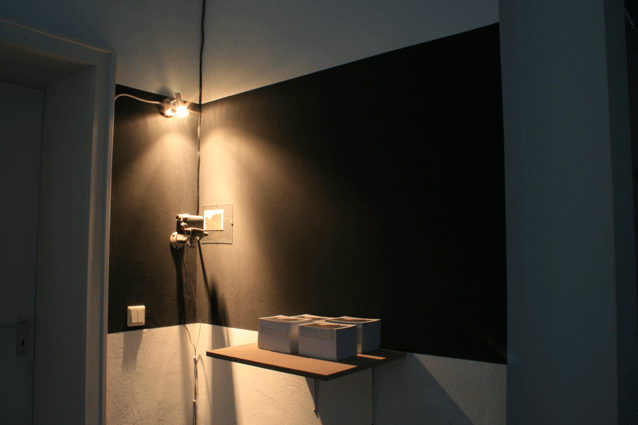
In all three rooms we encounter staged arrangements of photographs that have been transformed into filmic media through the use of the video camera. They are not still images but rather photographs whose movement is hardly visually perceptible. Or to put it another way: they are videos that monitor the photographs. This moment of monitoring, of zooming in and penetrating the image is a technical act that, in a metaphorical sense, can be understood as an intellectual approach to the image content and presentation. In a similar vein as surveillance—where the question “Is everything here still okay?” is always present—Alexander Steig’s approach provokes the question “Does this photo depict other realities than those I think I see?”The identities of the people depicted become even more diffuse when we register that Alexander Steig presents them to us as “stars.” At least that’s what the titles of the works suggest. Since 2003, Steig has continuously developed his Stars series that raises more or less well-known individuals from political life—and not the usual suspects from the film and music industry—to the status of celebrities. But this star nomination does not come with a social upgrade. Rather, the “stars” in Alexander Steig’s work are embedded within a glamour-free presentation paired with an ironic break.
Obviously, a star only becomes a star through his or her presence in the media. And the process by which we approach the people depicted in this exhibition is not unlike the public attitude towards a star. For this attitude is usually ambivalent: on the one hand, there is enthusiasm for the idealized person that results from the cult of stardom; on the other hand, there is the desire to look behind the surface of the star—to the person underneath, with all of his or her weaknesses and missteps—indeed to explore the multi-layered personality of the idol beyond the public idealization.
Alexander Steig is suggesting a certain type of visual investigation of photographic and media portraits in his arranged installations (what he calls “stagings”); in these settings, media defaults and standards are undermined by a controlled focusing and presentation of photographs and their details. The victim is also identified as the perpetrator, the self-confident individual as the brokenhearted one, the conscientious person as the arbitrary actor, the anonymous follower as the convinced political actor.
When Alexander Steig deliberately speaks of video staging in his work, it is a reference to the fact that he does not assign the visitor the task of being a distanced observer but rather aims to expose him or her to the cognitive process of the ambiguity of media images and presentations. The earnest appell (appeal/plea) the exhibition title makes to us and that we are urged to follow is more than just an echo of the time when this building was a barrack. It is an appeal to visitors to question the construction of media images and their dissemination, interpretation and presentation.
Back to the initial image of the website that focuses on an old tube monitor and a broom in a room in need of renovation. This ensemble is quite reminiscent of the work of Joseph Beuys who demonstratively performed the sweeping of interior and exterior spaces on several occasions. In 1972, for example, he swept the Karl Marx Square in Berlin following the May 1st demonstrations there. He also swept up the Dusseldorf Art Academy and even swept up the leaves in the forest. It was always a symbolic act of clearing away outdated structures and encrusted thought processes to make room for something new. In Alexander Steig’s ensemble, the broom next to the television may also be understood as a sign of intellectual tidying up, a tidying up in which one learns to distance oneself from pictorial meanings that are decades-old and prefabricated by the media.
Renate Buschmann
Translation: Courtenay Smith, Munich
(Catalogue Standort Ermekeilkaserne, Bonn, 2016/2020 )
